Seeing a leopard, one of Africa’s ‘big-five’ animals, on a photo safari is definitely a highlight! This beautiful, highly-adaptable cat is elusive, silent and lives in dense river areas in most parks. It is a solitary cat and mainly nocturnal, which is the reason it is rarely sighted.
The Leopard’s coat provides the perfect camouflage, enabling it to just blend into its surroundings and become almost invisible.
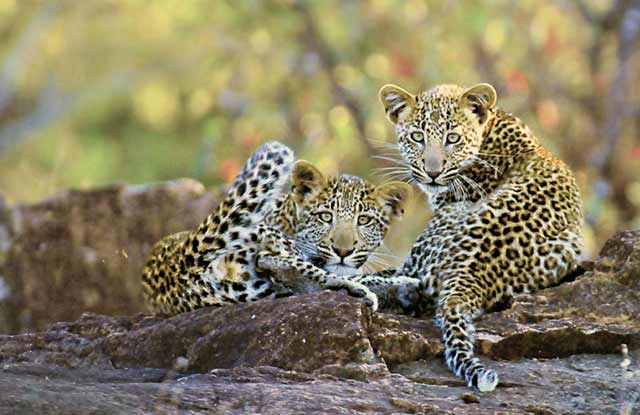
ABOUT LEOPARDS
The chances of seeing a leopard are best in the early morning and late afternoon, but because they are unpredictable, you could also see them at midday. They tend to sleep in trees or under thick bush. When the day starts to cool down they begin to arise. They are mainly found in dense riverine bush like the Sabie River area in the Kruger Park and river drainage lines in the Pilanesberg or rocky outcrops, like those near Halali in Etosha and the Calcrete Cliffs along the Auob River in the Kgalagadi Transfrontier Park.
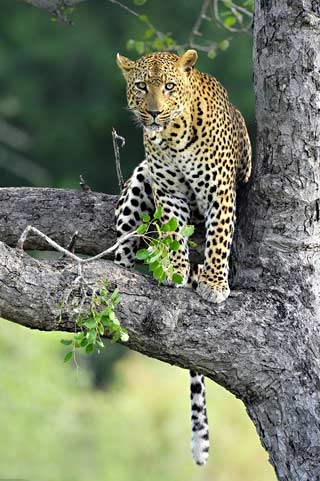
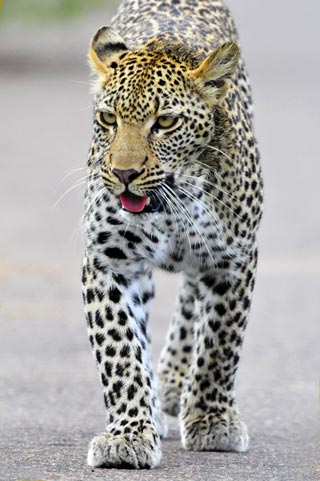
Some behaviors to look for are yawning, grooming, spraying (marking territory), playing, stalking or, if you are blessed, a mating pair.
If you come across a fresh carcass in a tree, chances are the Leopard is not far off. It may leave to have a drink or mark its territory, so stay with the carcass as you may get to see the return of the Leopard to its kill – if you have patience!
It will open the doors to images of it climbing up or leaving the tree, along with images of it just ‘hanging’ around in the tree. And keep and eye out for that white tip of a tail going through long grass, drive in the direction the cat is moving and position yourself where there is a gap in the grass. You may just get ‘that great photo’!
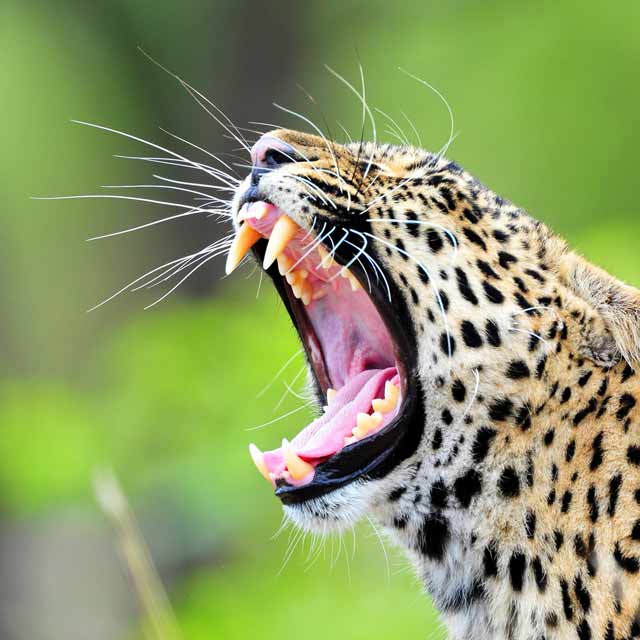
Listen for the rasping grunt (or sawing of wood sound) the Leopard makes, which is usually heard in the evenings. The sound is to advertise its presence to other neighboring Leopards, while marking its territory.
Mating leopards make good photographic subjects because this event is rarely seen. The pair mates a few times a day and the male will stay with the female for a few days. After mating you may get some good action photos because, like the lioness, the female leopard turns to swat the male. There may also be some snarling involved and then it’s all over – they go their separate ways.
Leopard cubs are kept hidden in dense bush or secluded areas. If you come across cubs, try to stay with them as they frolic in the bush and play with each other.
They get into all kinds of mischief and make good photographic subjects. No matter what they are doing, you won’t want to miss this opportunity.
Leopards hunt mainly at dusk or during the night. They first stalk their prey, then a quick, short dash and a pounce and they have taken them down. It’s all a total surprise attack. They kill with a bite to the neck and then they hoist their kill up a tree to get it out of reach of other predators, like lion and hyena.
They are anatomically built for this, with large heads and very strong necks. This allows them the ability to pull their prey up into the tree where they will feed at their leisure.
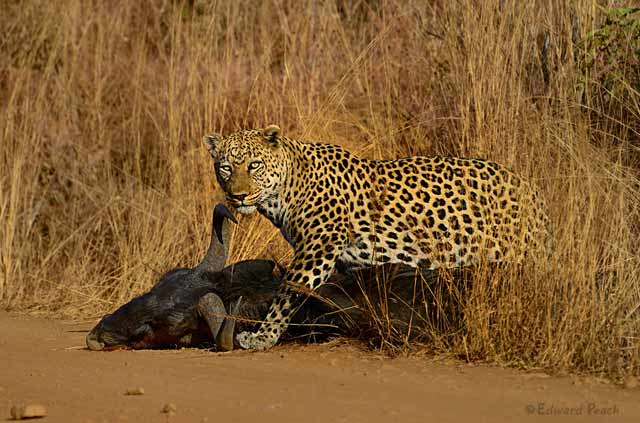
If you want to see a leopard in action then look for the bush signs – watch their prey. An Impala snorting will be an alarm call that something is amiss. A herd of Springbok or Impala looking in one direction or a warthog with tail erect lets you know some action may take place soon. Follow their line of sight and you may see a Leopard.
Most people will put their cameras away on overcast days, but these are the best days to photograph leopards. It becomes an exposure challenge if a leopard is sitting in the shade of a tree with a bright sunny sky as the backdrop. When the sun is blocked by clouds, it cuts down on the deep shadows and bright highlights.
The biggest challenge when photographing leopards is to ensure you get their long tail in the image, so be sure to check the edges of the photo frame before you click the shutter button!
If you struggle to find a leopard you are not alone. Many people have never seen one in the wild! You should then go on a night drive, as this will provide you with a good opportunity to spot this elusive cat. Another option is to stay at a camp.
Many in the Kruger, Kgalagadi, Etosha and Pilanesberg are located next to rivers or have waterholes in front that attract leopards and other animals. Leopards drink regularly throughout the day, so this could be your one chance to make some images of these spotted wonders.
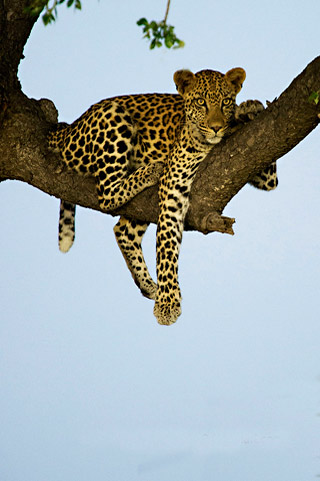
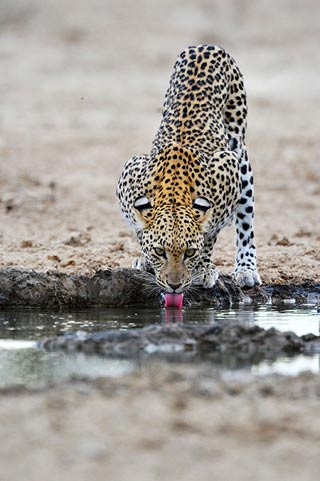
WHAT PHOTO GEAR IS NEEDED?
If you are doing a self-drive safari then ideally you will need a long lens. Since you cannot drive off-road, anything in the 400mm-600mm range will be good.
If you go on a guided safari in places such as the Sabi Sand or Timbavati Game Reserves the guides, in most cases, drive very close to the subjects! Now the ideal lens would be an 80-400, a 100-400 or a 50-500 / 150-500.
We have found that beanbags for both self-drive and guided safaris are best for supporting you camera within a vehicle. When photographing from the camps, a tripod with gimbal head is ideal.
Leopards are active mainly from sunset to sunrise so a camera with low-light capabilities would be a big advantage.
For nocturnal photography a standard speedlight flash with a Better Beamer will suffice. Many camps have floodlit waterholes, but for the ones that do not, you could use a Lightforce spotlight.
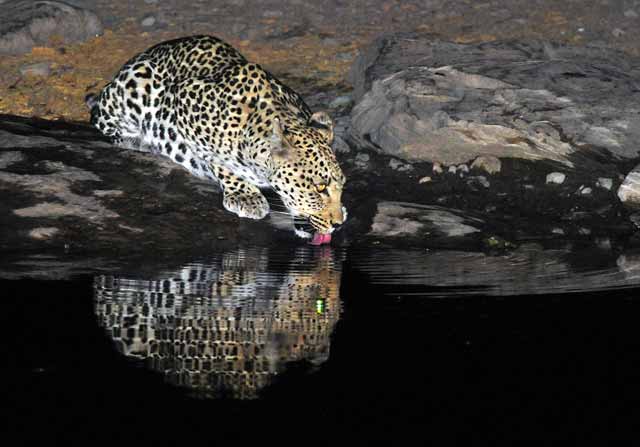
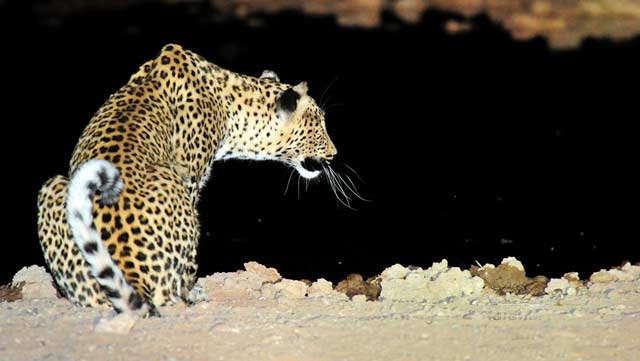
A southern Africa photo safari adventure with a chance to photograph Leopards is one you won’t forget!
THE PARKS:
The Kruger National Park
Location: The Park is situated in north-eastern South Africa, bordering Mozambique and Zimbabwe.
Access: By road or air.
Facilities: There are over 20 park camps with accommodation ranging from camping, tents and chalets to large guest houses. In addition, there are five-star lodges in concessions within the park and in private game reserves outside the park forming the ‘Greater Kruger Park’.
Reservations: Can be made online on the SANParks website and directly with the private lodges.
Best Locations: Leopards can be found throughout the Kruger Park but they are most often seen near the seven perennial rivers that cut through the Park.
Pilanesberg National Park
Location: The Park is situated in the North-West Province of South Africa in the remains of a volcano.
Access: By road or by air.
Facilities: There are seven main lodges in the park ranging from three to five stars and the accommodation choices are camping, tents or chalets.
Reservations: Can be made online with the various lodge groups – Legacy, Golden Leopard, Pilanesberg Private Lodge and African Anthology.
Best Locations: Leopard hot-spots tend to be around Lake Mankwe and any rocky area.
Kgalagadi Transfrontier Park
Location: The Park is situated in South Africa in the Northern Cape along the Namibia and Botswana borders.
Access: By road or by air.
Facilities: There are three main camps, six wilderness camps, and one luxury camp on the South African side and two luxury camps on the Botswana side providing accommodation from camping to luxury chalets.
Reservations: Can be made online on the SANParks website or directly with the private lodges; Transfrontier Parks Destinations in South Africa (!Xaus Lodge) and Ta Shebube in Botswana (Rooiputs, and Polentswa).
Best Locations: Leopards are seen all-year round in both the Auob and Nossob riverbeds and sometimes on the two dune roads.
Etosha National Park
Location: The Park is situated in northern Namibia on a huge salt pan.
Access: By road or by air.
Facilities: There are five camps in the park and many private lodges outside the park providing accommodation from camping to chalets.
Reservations: Can be made online via NWR and with the various private lodges.
Best Locations: Leopards can be seen throughout Etosha at most of the waterholes.
by Mario Fazekas
All text & photos: © 2013 Mario Fazekas. All rights reserved.
Leopard with Wildebeest Kill photo: © 2013 Edward Peach. All rights reserved

Leave a Reply